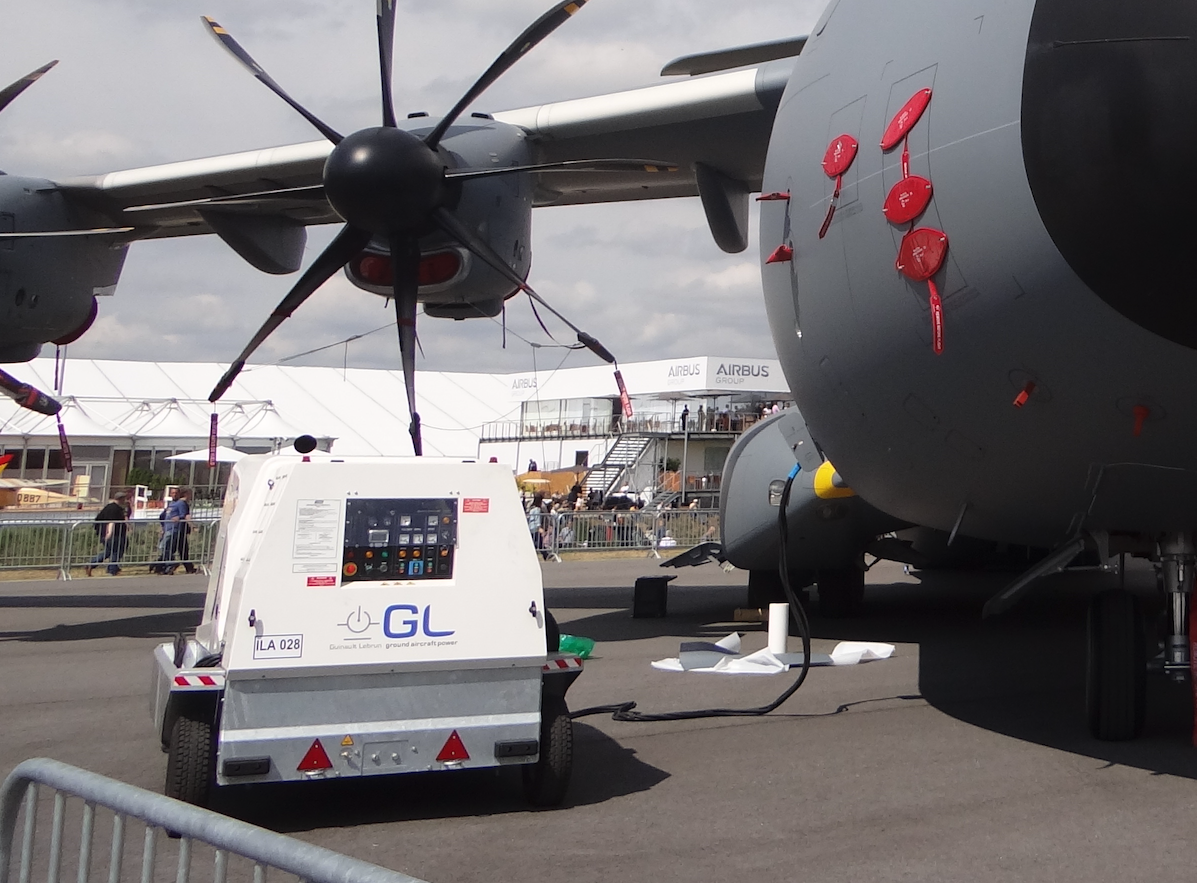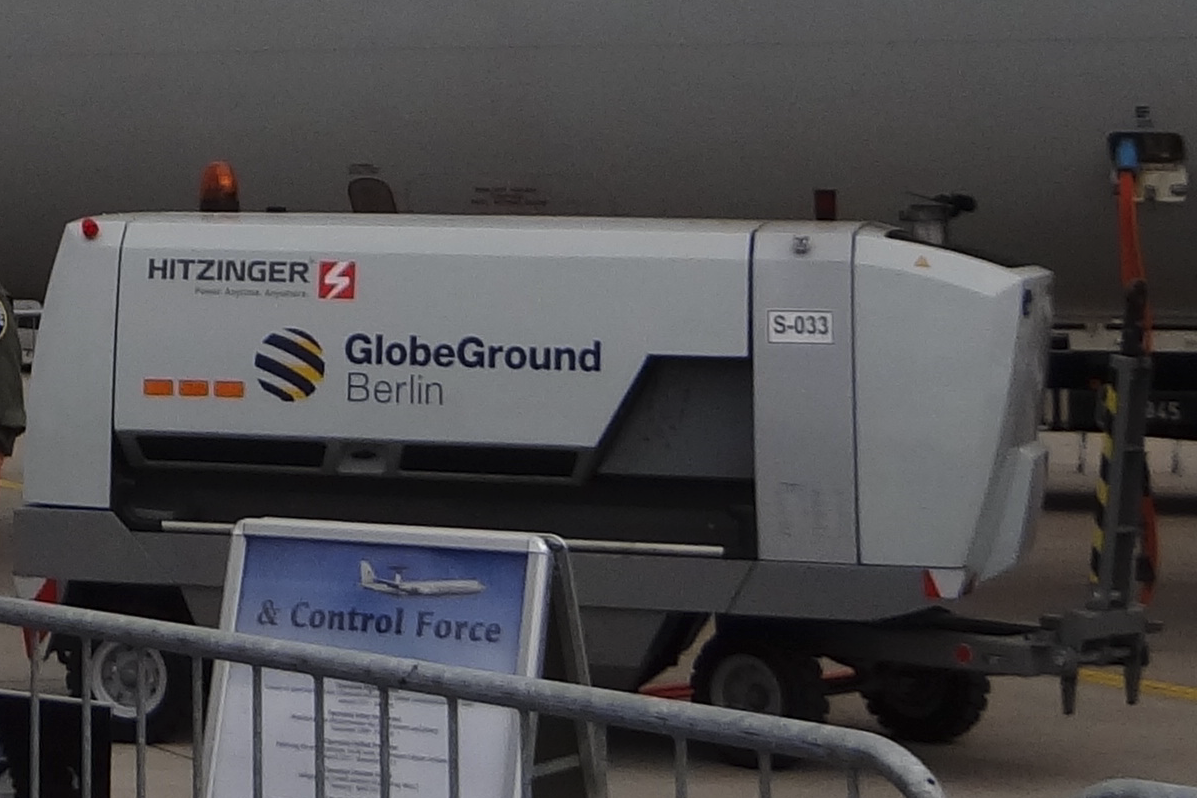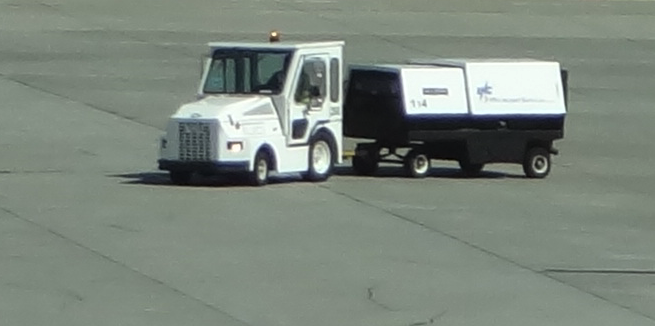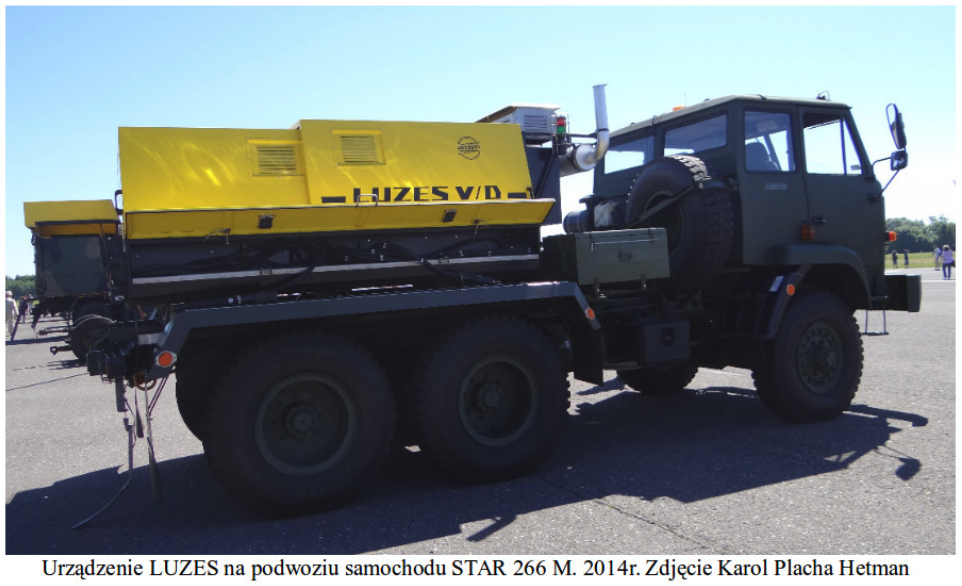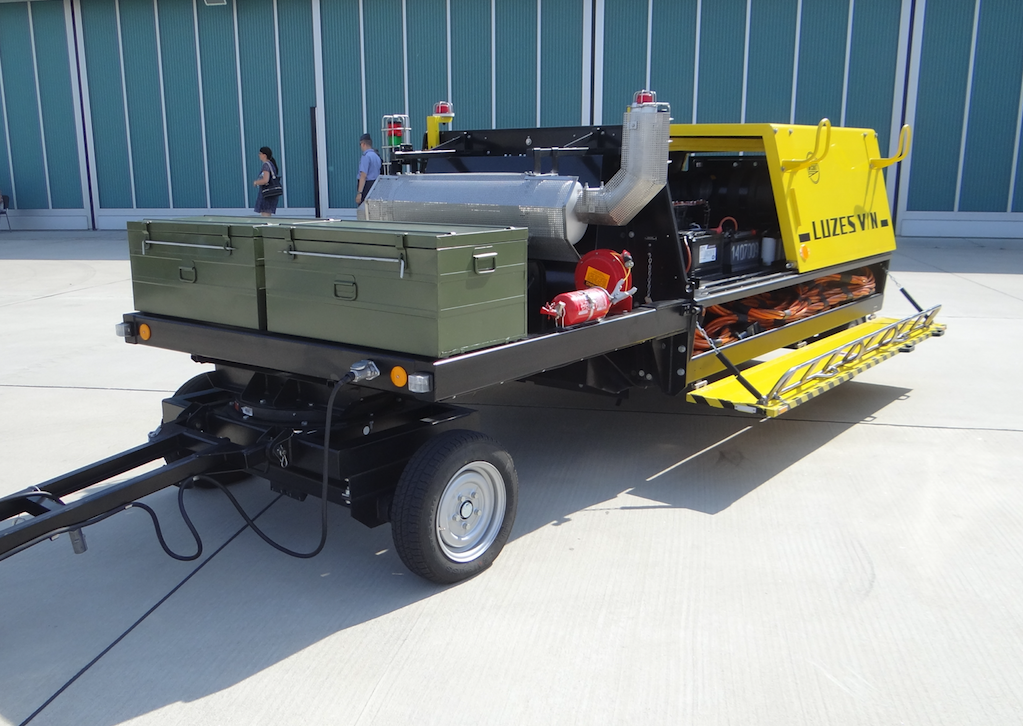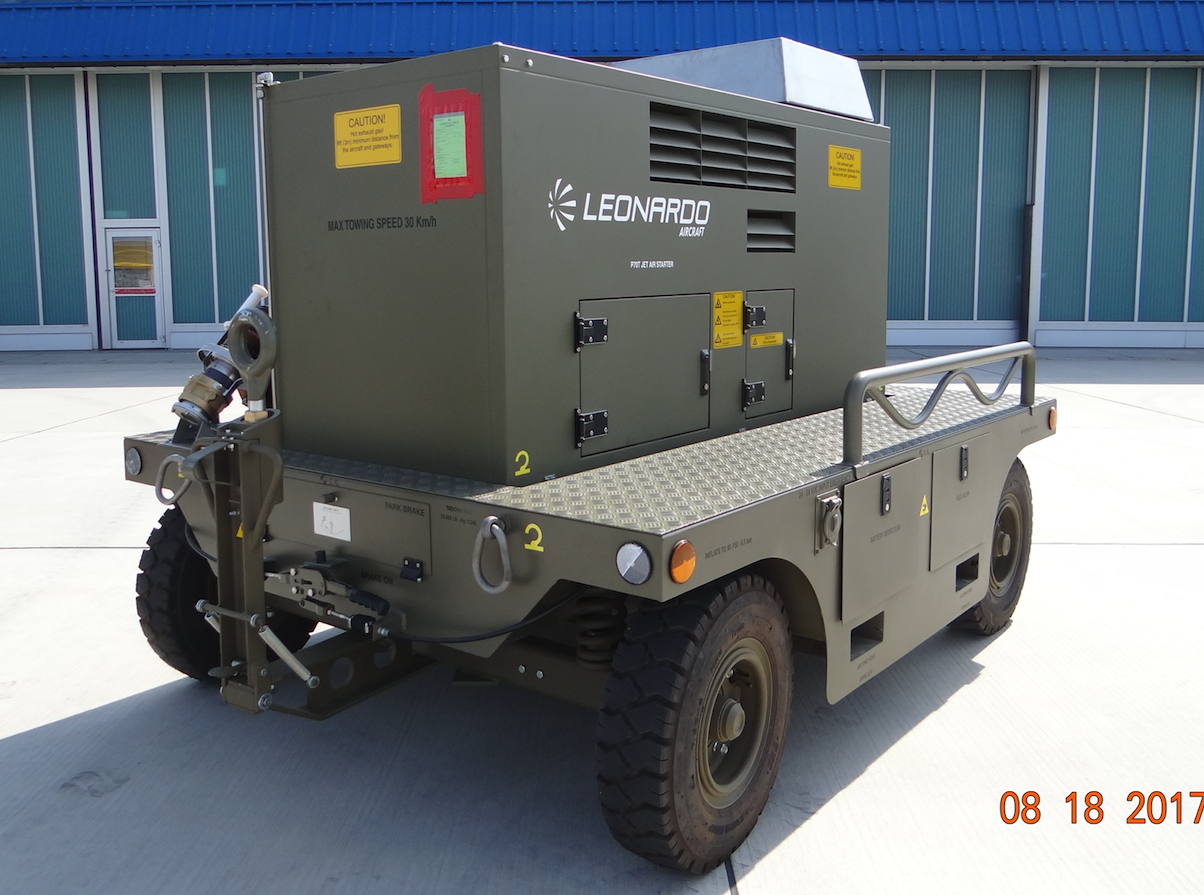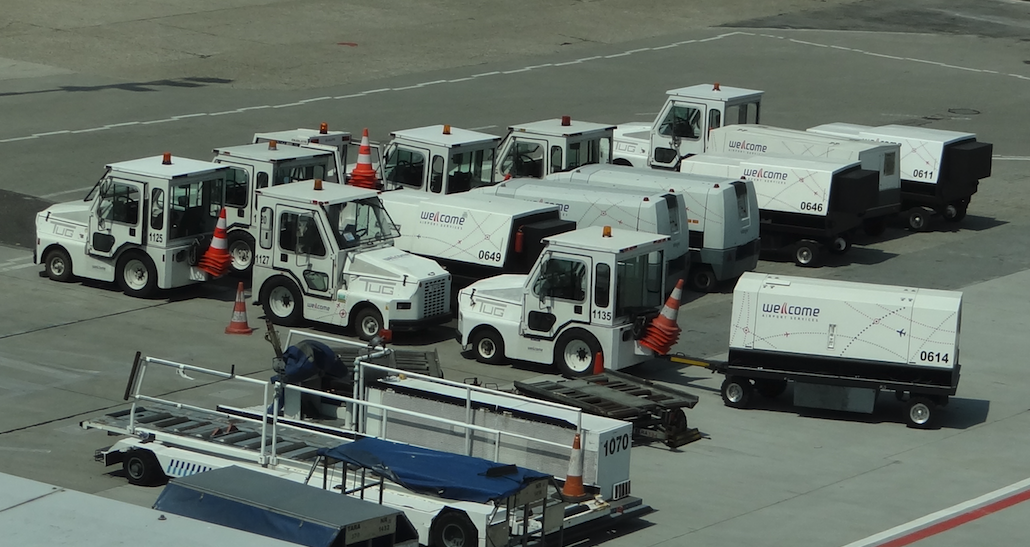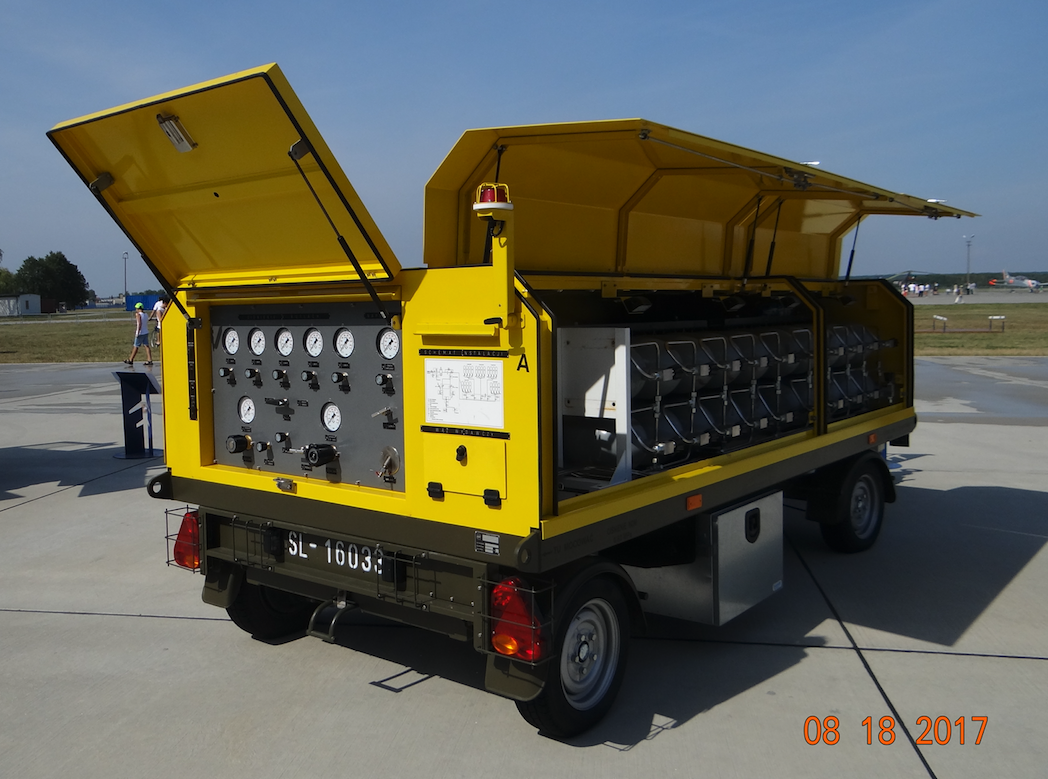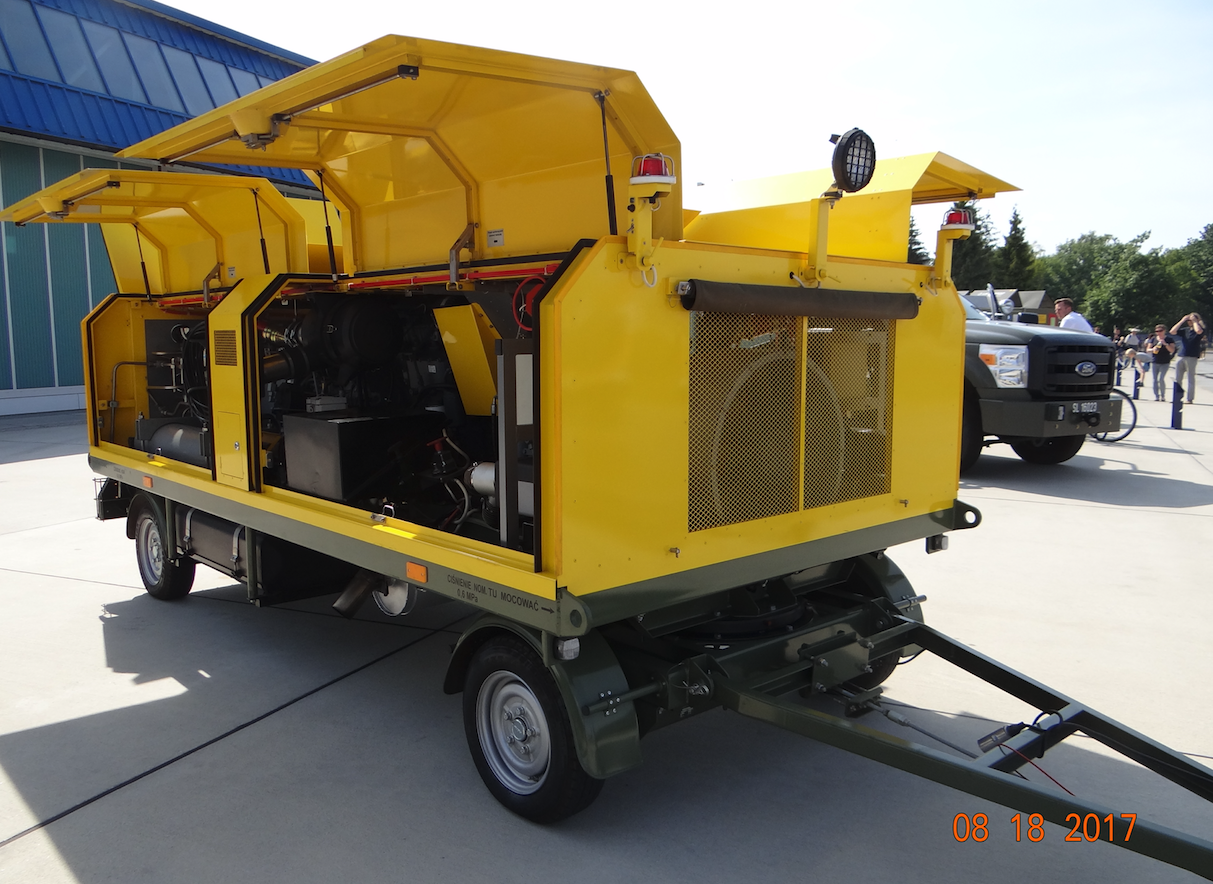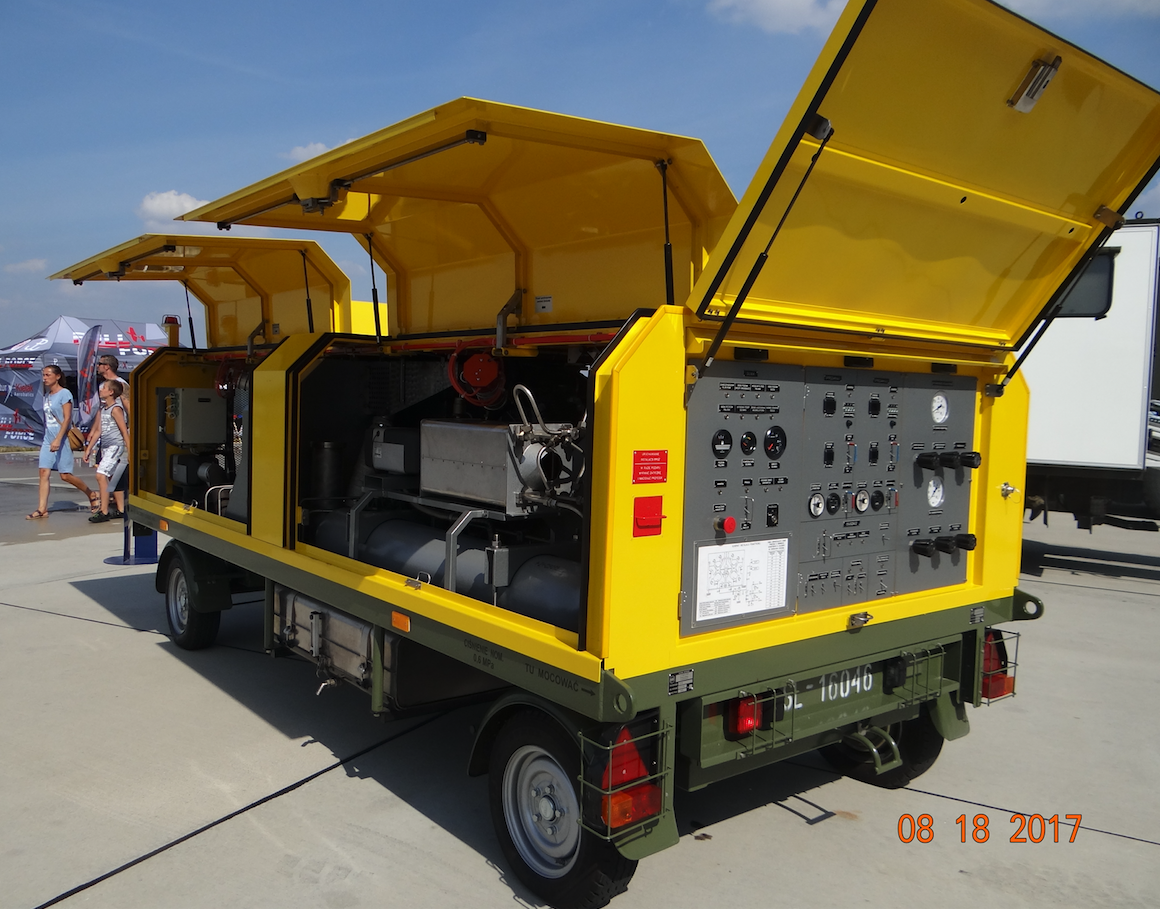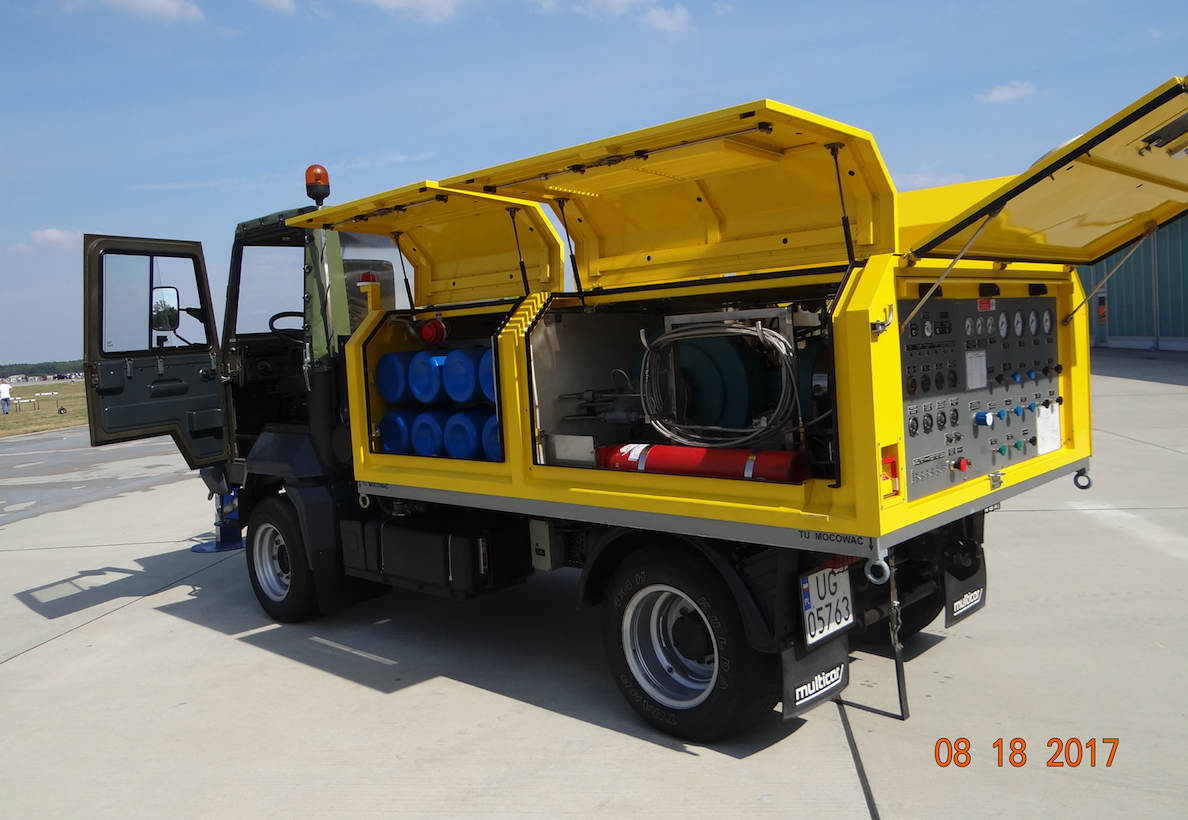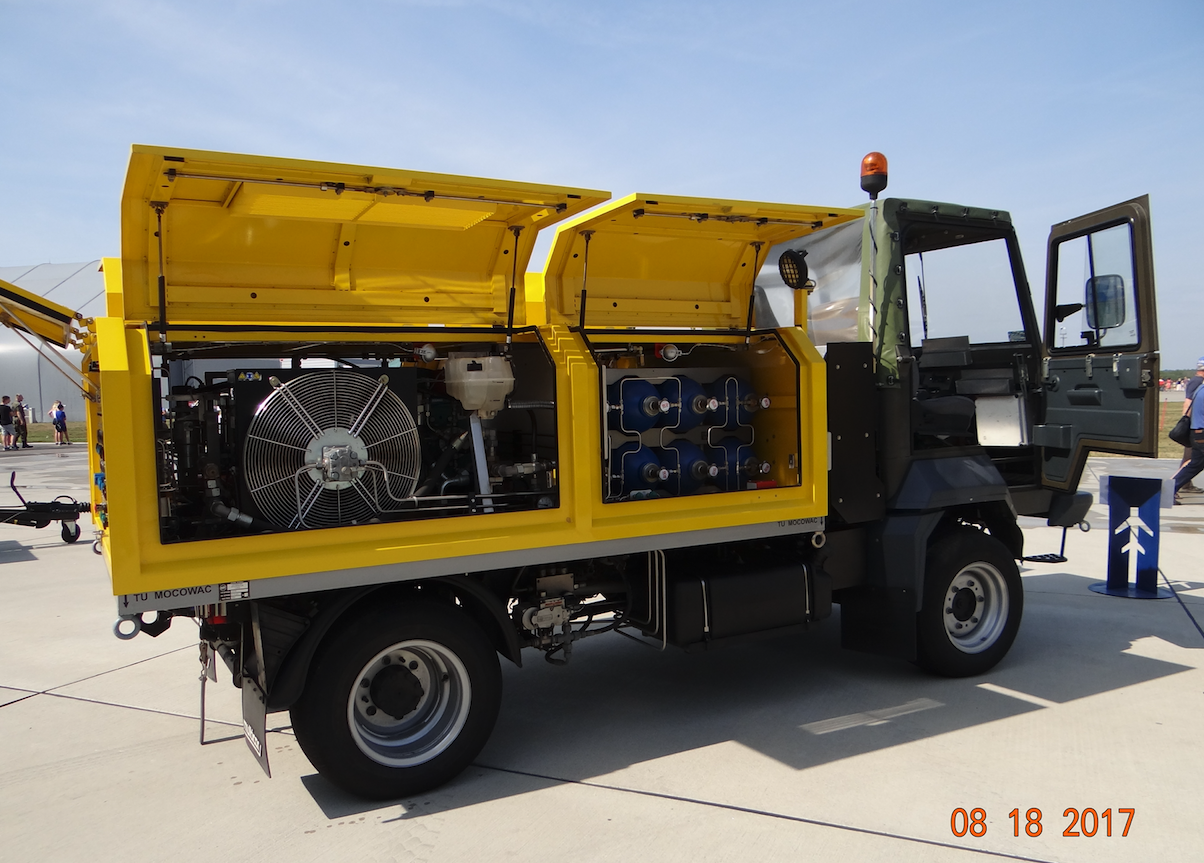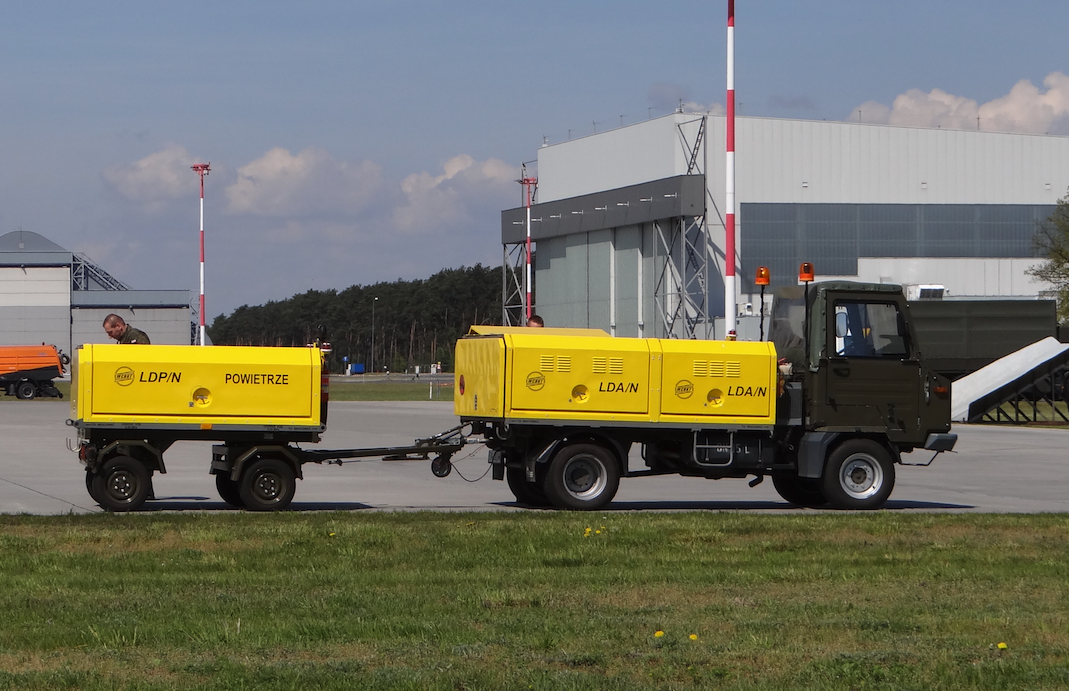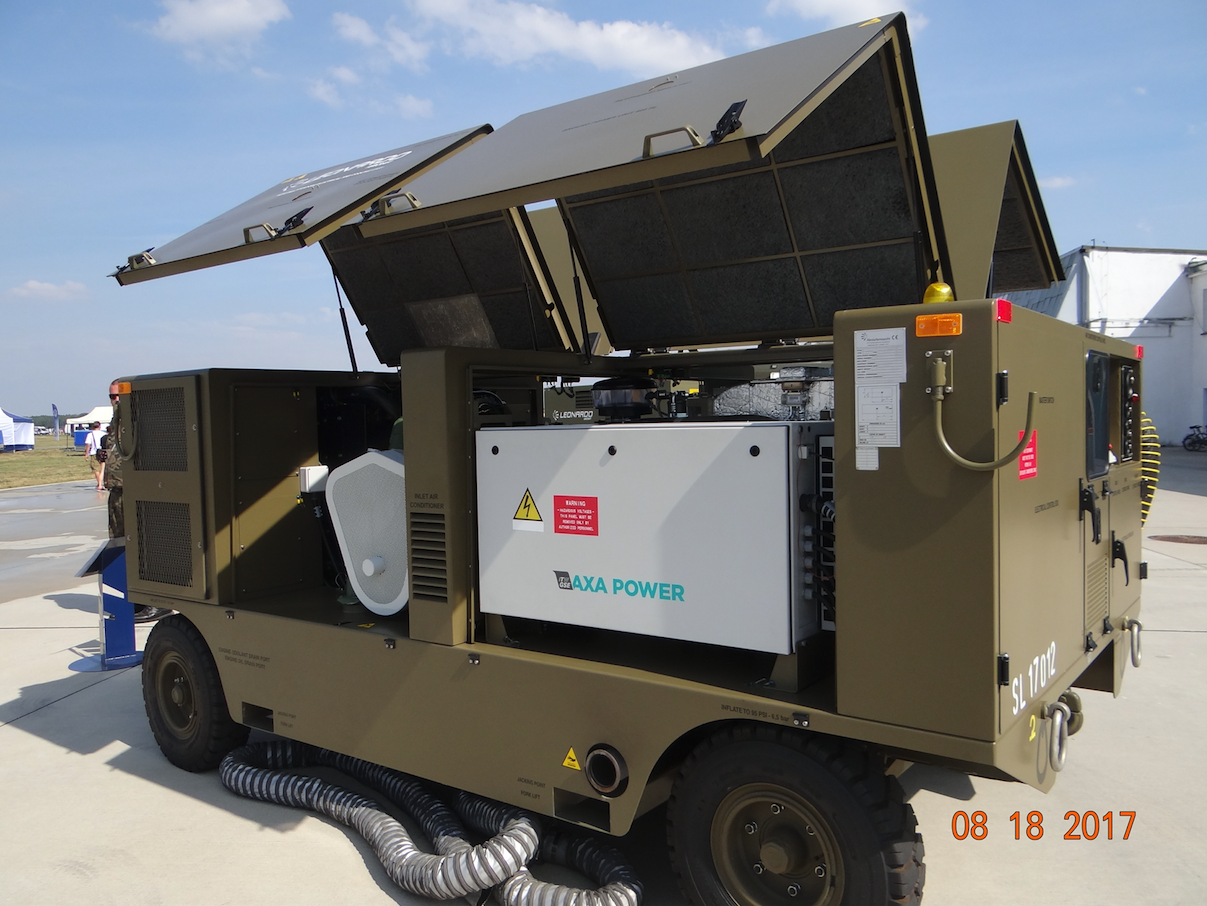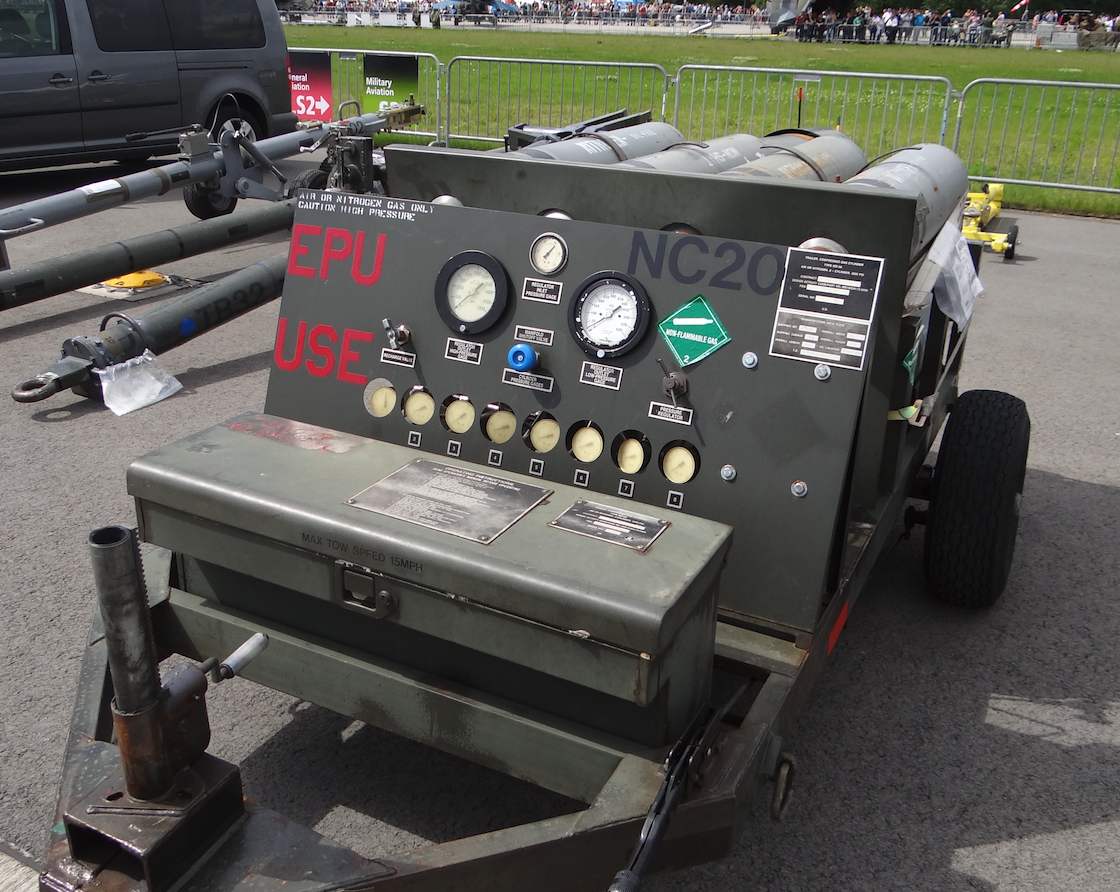Kraków 2017-10-04
Airport aggregates.
Airport aggregates is a very broad concept. However, in this article we want to present this type of equipment that is located close to the aircraft standing on the stator or in the gate and is used to service the aircraft before and after the flight. And it is a very specialized service; supply of oxygen, nitrogen, interior heating or cooling, and electricity supply.
We are currently focusing on the present day.
GPU (ground power unit) starting power generators.
Starters are devices used to start turbojet and turboprop engines that drive airplanes and helicopters. It is worth mentioning that there are two basic ways of starting aircraft engines in the world: with electricity or compressed air. There are also methods of starting with gunpowder charges or with a small internal combustion engine.
The Ground Power Unit (GPU), i.e. a power generator, is used to supply electricity to a standing plane or helicopter in order to use it to start the aircraft’s engines. This energy can also be used for service and renovation works. The GPU drive unit (power generator) can be stationary or mobile, that is, placed on a cart or on a car. The genset is connected to the aircraft by means of an appropriate electric cable terminated with a standard plug, which is connected to a socket hidden in the side of the aircraft or the compartment of the front landing gear. The generator typically supplies 120V AC or 28V DC electricity. Electric current frequency 400 Hz. The aggregate usually consists of a diesel engine and an alternator (generator), but other configurations are possible, including an extension of, for example, an air compressor (compressor).
For 60 years, the scheme of power generators has not changed. However, there has been tremendous technological progress. The devices are very durable and reliable. The operation is simple and intuitive. Digital control modules regulate voltage and other parameters. The displays show the current operating status of the device and monitor the parameters. It is possible to download recorded (remembered) operating parameters for service purposes. Voltage regulators compensate for voltage drops or sudden spikes. They are already responding to a deviation of +/- 1%. Electronic systems react: to too high a frequency of 420 Hz, to a too low frequency of 320 Hz, to a high voltage of 130 V, to a low voltage of 100 V, to an overload of 125%. The same electronic systems supervise the operation of the diesel engine, regulating its speed. They monitor: pressure in the lubrication system, coolant temperature, engine shaft revolutions exceeding 120% of the nominal revolutions. The electronic memory records: working hours, rotational speed, voltage in the diesel engine system, oil pressure, coolant temperature, engine load, etc. The engines have an automatic measurement of the fuel level in the tank. In the engine automatics, it is correct, slow shutdown with the cooling function and emergency shutdown with one button.
There are many manufacturers of Ground Power Unit (GPU) devices in the world. This is due to the wide application of this type of electric current generators in many areas of life. They are produced with the power of 60, 90, 100, 120, 140, up to 180 kVA. At airports around the world, we can meet the company’s devices: TRONAIR INC, TEXTRON GSE – TUG TECHNOLOGIES CORPORATION, AERO SPECIALTIES, AIR + MAK INDUSTRIES and many others.
An alternative to typical Ground Power Unit (GPU) devices are battery packs on towed carts, called Battery Card.
LUZES
Polska Grupa Zbrojeniowa, including the Military Central Design and Technology Office, has been producing power generators under the name LUZES for many years. The group’s offer includes several devices of various types and powers. The basic machine is LUZES made in three variants: LUZES II / M stationary, LUZES V / D on the chassis of a STAR truck or similar, LUZES V / N on a low trolley, which can be transported on board a CASA C-295 class aircraft. Basic parameters of LUZES V / D – Alternating current; 115 / 200V 400 Hz, 3-phase, 4-wire, 90 KVA continuous AC power. Constant current; 2x28V.
Cars are painted dark green as standard, and containers with equipment are painted yellow. In connection with the foreign missions conducted by the Polish Air Force, a series of LUZES V / D vehicles painted uniformly in sand color was created.
Air Stater Unit (ASU).
Air Stater Unit (ASU), as well as GPU (Ground Power Unit) power generators, belong to the GSE (Ground Support Equipment) ground handling equipment. ASUs are used to start aero engines equipped with pneumatic starters. They supply the necessary amount of air at a certain pressure through one or two hoses connected to a connector hidden in the airframe.
The standard ASU consists of a diesel engine that moves the compressor, usually a screw type. The technology has not changed for many years, but the technique has gone a long way. ASU devices are electronically controlled. They have a simple and intuitive operation. The device is controlled by a touch panel or a touch screen, which eliminates a large number of switches. ASU devices have an electronic memory that is used in service and repair work. Top-shelf devices have on-line data transmission to service centers, to desktop computers. The employees operating the ASU have access to the machine’s operating status and error information on an ongoing basis, which allows the device to be serviced in accordance with the actual technical condition.
ASU devices are built to the order of users of specific aircraft. They differ in the efficiency and pressure of the supplied air. One of the largest devices of this type is built by MAK, which is used to start the largest turbo-fan engines, type GE90-115B, powering Boeing B.777 planes.
The leading manufacturers of ASU include the same companies that produce GPU devices. The producers include: AIR + MAK INDUSTRIES, MOBILE SULTION, and others.
Most ASU models are mounted on carts, but there are structures mounted on car chassis. Central systems of compressed air networks are not used due to significant losses in the transmission of compressed air over long distances.
Airport distributor of air, oxygen and nitrogen.
What distinguishes military aircraft from passenger aircraft are additional GSE (Ground Support Equipment) devices that commercial aviation does not need. These include airport air, oxygen and nitrogen dispensers. Polska Grupa Zbrojeniowa, including the Military Central Bureau for Design and Technology, has been producing a full range of this type of equipment for many years, ensuring full service of combat aircraft, combat helicopters and transport aircraft. The advantage of these devices is the possibility of their transport on board CASA C-295 aircraft. These devices are mounted either on low-floor trolleys or on MULTICAR aircraft landing gear. The possibility of transporting these devices over long distances allows to secure the operation of the Polish Air Force outside the borders of the Republic of Poland. These devices are also produced in versions mounted on STAR truck chassis.
Airport Air Distributor LDP / N.
The LDP / N Airport Air Distributor is intended for replenishing the compressed air supply in the pneumatic system of an aircraft. The supplied air meets the requirements of the PN-91 / L-01261 standard. The entire device is placed in a container. The basis for the installation is 20 compressed air cylinders. The device includes an installation for taking air from a stationary compressor and an air discharge system. The chassis of the distributor is a two-axle trailer equipped with 4 shoe brakes, actuated by the overrun device and a handbrake installed in the towline, which is actuated when the trailer is parked. The trolley has a lighting system with a voltage of 12 V. The electric current is drawn from the towing vehicle.
Airport Air Compressor LSP / N.
The airport air compressor on the low chassis LSP / N is designed to charge compressed air distributors, cylinders or other high-pressure tanks with compressed air at a pressure of up to 35MPa. Two air-cooled, four-stage high pressure compressors driven by a single diesel engine are used in the LSP / N unit. The device is equipped with two high-pressure tanks with a capacity of 50 liters each, intended for filling, dispensing and storing compressed air.
Airport Oxygen Distributor LDT / N.
Airport Oxygen Distributor LDT / N on a low chassis is intended for filling aircraft installations with oxygen gas. In terms of transport, the LDT / N distributor is adapted for transport by CASA C-295 aircraft or its equivalent and for transport on airport taxiways and on hardened and unpaved roads. Depending on the needs of the customer, the device can be offered in a basic version on a low chassis, adapted to towing, or on a car chassis. The overall design of the LDT / N is very similar to the LDP / N air distributor. The basis is a set of high-pressure cylinders. The dispenser cylinder is charged from an external oxygen source without the use of a compressor. Usually from the airport oxygen gasifier LGT / N. Oxygen delivery can be without or with a compressor.
Airport Oxygen Gasifier LGT / N.
The airport oxygen gasifier LGT / N on a low chassis is designed for gasification of liquid oxygen and for filling cylinders and other tanks, e.g. dispensers, with oxygen at a pressure of max. 16.5 MPa. In addition, it enables the filling of portable cryogenic tanks with liquid oxygen. As with the previous devices, air transport is possible, for example by a CASA C-295 plane. The device is placed in a container. The LGT / N gasifier is supplied from a TN-C or TN-S three-phase alternating current network or a power generator with the following parameters: 3 x 230V / 400V, 50 Hz.
Airport Nitrogen Distributor LDA / N.
The LDA / N Airfield Nitrogen Distributor is intended for filling aircraft installations with compressed nitrogen. The released nitrogen meets the requirements of the PN-91 / L-01262 standard. As in the previous cases, the device is mounted in a container placed on a low-loader trolley. The device consists of a battery of 8 high-pressure cylinders, a compressor and accessories. The machine can be transported on board the CASA C-295 aircraft.
Airport Nitrogen Gasifier LGA / N.
The airport nitrogen gasifier LGA / N on a low chassis is designed for gasification of liquid nitrogen and for filling cylinders and other tanks, e.g. distributors, with nitrogen at a pressure of up to 35 MPa. Moreover, it enables the filling of special, portable cryogenic tanks with liquid nitrogen. The LGA / N gasifier is supplied from a TN-C or TN-S three-phase alternating current network or a power generator with the following parameters: 3 x 230V / 400V, 50 Hz.
Other airport equipment.
Written by Karol Placha Hetman

